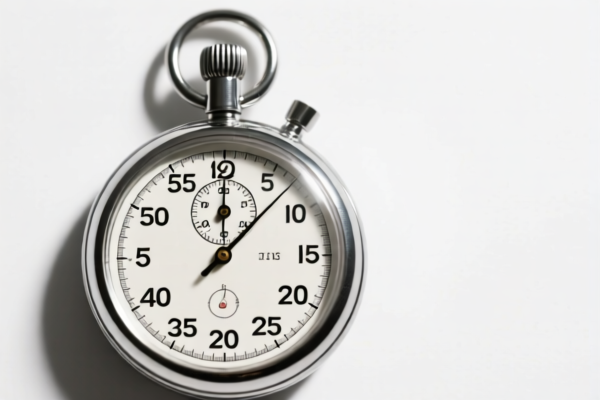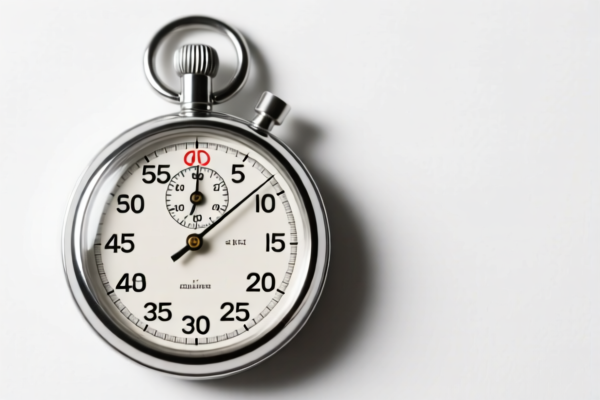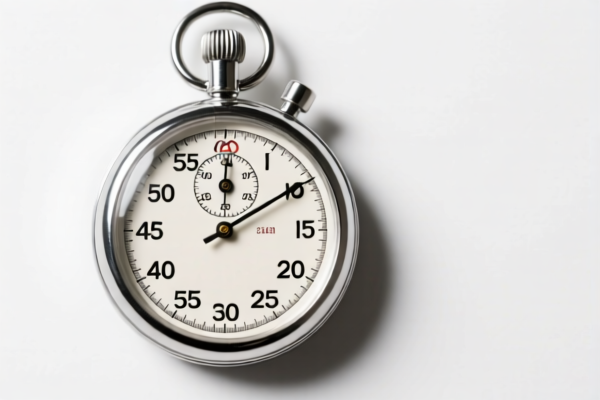| HS Code | Official Doc | Tariff Rate | Origin | Destination | Effective Date |
|---|---|---|---|---|---|
| 9101192020 | Doc | 37.5% | CN | US | 2025-05-12 |
| 9101192040 | Doc | 37.5% | CN | US | 2025-05-12 |
| 9102128000 | Doc | 37.5% | CN | US | 2025-05-12 |
| 9102124000 | Doc | 30.0% | CN | US | 2025-05-12 |
| 8479899599 | Doc | 57.5% | CN | US | 2025-05-12 |




Stopwatch
A stopwatch is a handheld timekeeping instrument designed to measure the duration of events. It is distinct from a clock in that it measures elapsed time rather than displaying a fixed time of day.
Material
Traditionally, stopwatches were mechanical, utilizing a balance wheel and spring mechanism. Modern stopwatches are predominantly electronic, employing quartz crystals for accurate timekeeping. Common materials used in construction include:
- Plastic: For the casing, providing lightweight and affordability.
- Metal (Stainless Steel, Aluminum): Used for more durable casings and buttons, often found in professional models.
- Quartz Crystal: The core component of electronic stopwatches, responsible for precise timing.
- LCD/LED Display: For digital displays, showing elapsed time.
- Buttons: Typically plastic or metal, used to start, stop, and reset the timer.
Purpose
The primary purpose of a stopwatch is to accurately measure the time taken for an event to occur. This makes it useful in a wide variety of applications.
Function
Stopwatches typically feature the following functions:
- Start/Stop: Initiates and halts the timing process.
- Reset: Returns the timer to zero.
- Lap/Split: Records multiple times during a single event. Lap time measures the time for each individual segment of an event, while split time records the time of each segment without stopping the overall timer.
- Digital Display: Shows elapsed time in hours, minutes, and seconds (and often milliseconds).
- Chronograph: A more complex stopwatch function, often including multiple sub-dials for recording intervals and cumulative times.
Usage Scenarios
Stopwatches are used in a diverse range of applications, including:
- Sports: Timing races, athletic performances, and individual exercise intervals.
- Science: Measuring reaction times, experiment durations, and the speed of processes.
- Coaching: Tracking athlete performance and providing feedback.
- Cooking: Timing food preparation and cooking processes.
- Manufacturing: Measuring production times and efficiency.
- Everyday Use: Timing parking, appointments, or other short durations.
Common Types
- Mechanical Stopwatches: Older, analog models requiring manual winding and operation. Known for their robustness but less precise than electronic versions.
- Digital Stopwatches: The most common type, utilizing LCD displays and quartz crystals for accurate timing. Often include multiple functions and memory storage.
- Chronographs: More complex stopwatches with multiple sub-dials for recording intervals and cumulative times. Often found in wristwatches.
- Smartwatch Stopwatches: Integrated into smartwatches, offering additional features such as data logging and connectivity.
- Lap Counters: Specialized stopwatches designed for recording lap times in swimming or running events. These often feature automatic lap detection.
Stopwatches are time-measuring instruments designed for precise timing of events. They can be incorporated into wrist watches, pocket watches, or exist as standalone devices.
Here are the relevant HS codes based on the provided information:
- 9101.19.20.20: This HS code covers wrist watches, pocket watches, and other watches (including stopwatches) with a case of precious metal or metal clad with precious metal. Specifically, it refers to electrically operated wrist watches, whether or not incorporating a stop watch facility, with an opto-electronic display only. Straps, bands, or bracelets entered with watches of this subheading are classifiable therewith. The total tax rate is 37.5% (0% basic tariff, 7.5% additional tariff, and 30% additional tariff after April 2, 2025).
- 9101.19.20.40: This HS code also covers wrist watches, pocket watches, and other watches (including stopwatches) with a case of precious metal or metal clad with precious metal. It refers to electrically operated wrist watches, whether or not incorporating a stop watch facility, with an opto-electronic display only, but other than those specified in 9101.19.20.20. Straps, bands, or bracelets entered with watches of this subheading are classifiable therewith. The total tax rate is 37.5% (0% basic tariff, 7.5% additional tariff, and 30% additional tariff after April 2, 2025).
- 8479.89.95.99: This HS code covers machines and mechanical appliances having individual functions, not specified or included elsewhere. Specifically, it refers to other machines and mechanical appliances, and other types. The basic tariff is 2.5%, with no additional tariff currently, but a 30% additional tariff after April 2, 2025. Additionally, steel and aluminum products are subject to a 25% additional tariff.
Regarding HS code 9101.19.20.20 and 9101.19.20.40, please note that straps, bands, or bracelets entered with these watches are classifiable therewith.
Customer Reviews
No reviews yet.